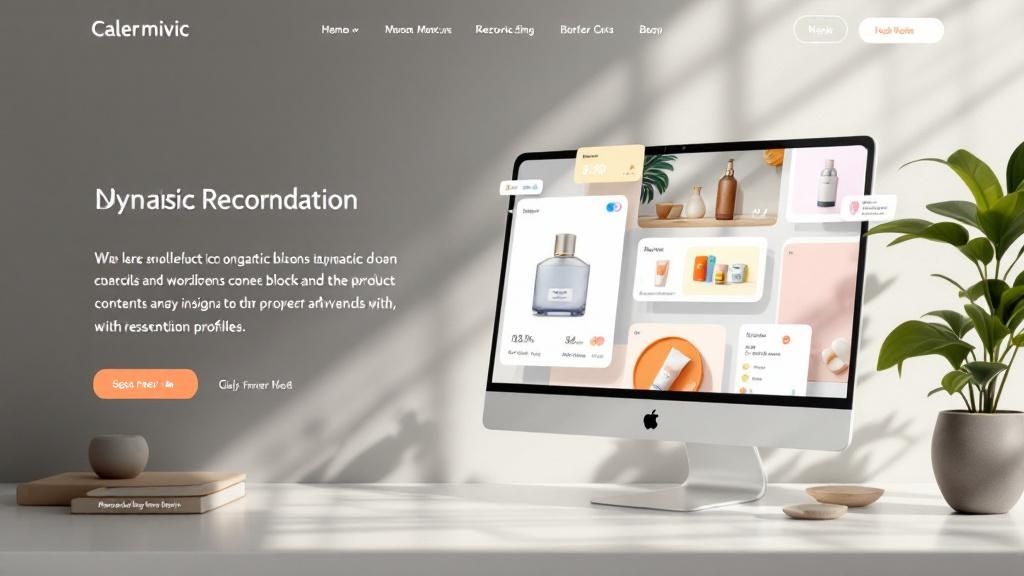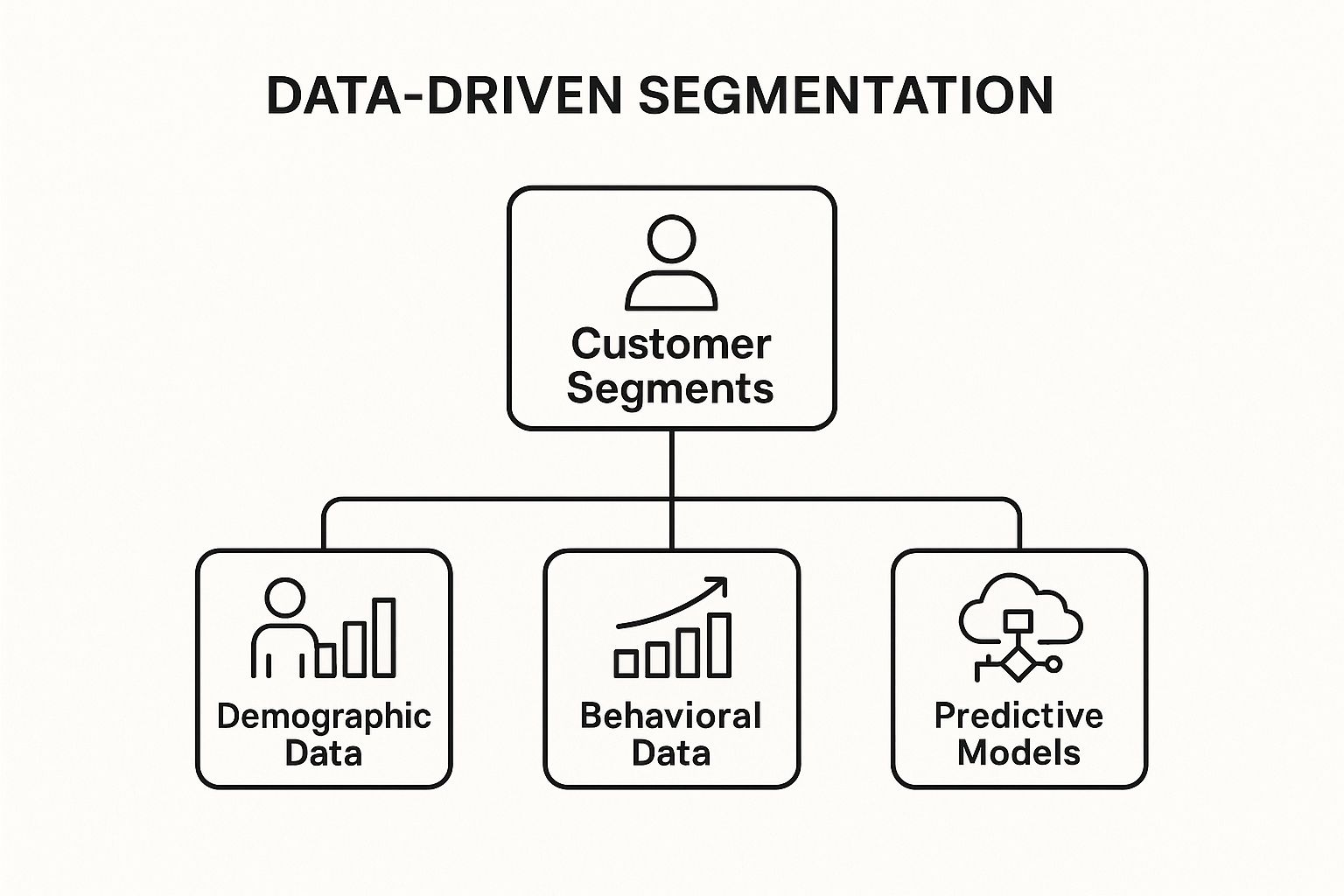
Juggling endless marketing tasks, from nurturing leads to scheduling social media posts, often feels like a losing battle against the clock. Many marketers struggle with the overwhelming manual effort required to deliver personalized experiences at scale, leading to missed opportunities and inconsistent messaging. This is a common pain point for digital marketers, content creators, and agencies alike. The promise of "set it and forget it" automation often falls short, resulting in generic campaigns that fail to connect.
This article offers a solution by outlining the essential marketing automation best practices that high-performing teams use to streamline workflows, deepen customer relationships, and drive measurable growth. We'll move beyond basic tips to explore actionable frameworks for implementing sophisticated automation that truly works, from behavior-triggered emails to dynamic content personalization.
1. Behavior-Triggered Email Automation
Behavior-triggered email automation moves beyond generic "email blasts" to deliver hyper-relevant messages in real-time based on a user's specific actions. Instead of guessing what a customer wants, you respond directly to their demonstrated interests. This approach is highly effective because it delivers the right message at the right moment, guiding users toward conversion or re-engaging their interest when their intent is highest. This is one of the most powerful marketing automation best practices because it directly links your marketing efforts to tangible customer behavior, leading to significantly higher engagement and conversion rates.

How to Implement Behavior-Triggered Emails
- Start with High-Impact Triggers: For a clear ROI, begin with foundational triggers like an abandoned cart email. If a user adds an item to their cart but doesn't complete the purchase, an automated email sent an hour later can recover a significant percentage of otherwise lost sales. This is a common use case for e-commerce marketers.
- Leverage Browse Abandonment: For a creator selling online courses, if a user repeatedly views a specific course page, a "browse abandonment" workflow can send them an email featuring that exact course, perhaps with a student testimonial or a limited-time offer.
- Onboard New Users Effectively: Immediately after a user signs up for your SaaS tool or newsletter, trigger a welcome email series. This sequence can introduce key features, offer a startup guide, and showcase your brand's value over several days, ensuring they feel supported from day one.
2. Lead Scoring and Progressive Profiling
Lead scoring and progressive profiling work together to qualify and understand prospects. Lead scoring assigns points based on a prospect's attributes (e.g., job title) and actions (e.g., visiting a pricing page), while progressive profiling gathers more information over time through shorter, smarter forms. This strategy builds a crucial bridge between marketing and sales by ensuring marketing delivers higher-quality leads, allowing sales teams to engage in more relevant conversations. For agencies and B2B marketers, this alignment dramatically improves conversion rates by focusing energy on the most promising prospects.
How to Implement Lead Scoring and Progressive Profiling
- Build a Simple Scoring Model: Start by defining your ideal customer profile. Assign positive points for data that matches this profile (e.g., job title for a B2B service) and for behaviors indicating interest (e.g., downloading a case study). Assign negative points for actions that signal a poor fit, like a freelancer visiting a careers page.
- Establish Clear Thresholds: Define what scores qualify a lead for different stages. For example, a lead reaching 50 points might become a Marketing Qualified Lead (MQL) and enter a nurture sequence. A lead reaching 100 points could become a Sales Qualified Lead (SQL), automatically triggering a notification for a sales rep to follow up.
- Use Progressive Profiling on Forms: Instead of one long form, ask for new information with each interaction. If you already have a lead’s name and email from a newsletter signup, your next form for a webinar can ask for their company name and role. This feels less intrusive and enriches your lead profiles over time.
3. Cross-Channel Campaign Orchestration
Cross-channel campaign orchestration creates a single, unified customer journey across all touchpoints like email, social media, and web experiences. Instead of a customer receiving disconnected messages on different platforms, orchestration ensures every interaction is part of a larger, intelligent conversation. This is one of the most vital marketing automation best practices for modern marketers because it recognizes that customer journeys are not linear. By syncing channels, you ensure messaging is consistent and timely, which enhances the customer experience and builds stronger brand affinity.

How to Implement Cross-Channel Orchestration
- Map the Complete Customer Journey: Before automating, visualize every potential touchpoint. For a startup launching a new app, an initial ad on Instagram could lead to a website visit, triggering a follow-up email sequence with an app download link. You can learn more about crafting effective cross-channel assets with these social media marketing templates.
- Establish a Channel Hierarchy: Define rules for communication. If a user is highly active on your mobile app, prioritize push notifications over email for urgent alerts. Use customer data to understand their preferred channels and respect those preferences to increase engagement.
- Ensure Consistent Branding and Messaging: A campaign's theme, whether on a social media ad or in an SMS message, should feel familiar and connected, reinforcing brand identity and trust.
4. Dynamic Content Personalization
Dynamic content personalization automatically tailors the content of your communications to individual users in real-time. Instead of sending the same email or showing the same webpage to everyone, this strategy uses customer data to swap out specific content blocks, creating a unique, one-to-one experience. This is one of the most powerful marketing automation best practices because it directly addresses a user's known interests, transforming your marketing from a broadcast into a conversation. For content creators and marketers, this can significantly increase conversion rates and foster stronger customer connections.

How to Implement Dynamic Content Personalization
- Start with Basic Segments: Begin by personalizing content based on simple data points. A real-world use case for a retailer: show a different promotional banner on your website for new visitors versus returning customers. In an email, display a different offer based on a subscriber’s geographical location.
- Use Behavioral Data for Content: If a customer has frequently viewed women's running shoes, your next promotional email can feature a header image of female runners and showcase products from that specific category, while a different user sees content related to men's hiking gear.
- Create Modular Content Blocks: Design your emails and landing pages with modularity. Create different versions of a section (e.g., a testimonial, a product block) and set rules for which version displays based on the user's profile. Effective copy is crucial; find helpful advice in our guide to SEO copywriting.
👉 Try MediaWorkbench.ai for free – schedule your posts and generate AI content in one place!
5. Automated Customer Lifecycle Management
Automated customer lifecycle management uses systematic touchpoints to guide users through every stage of their relationship with your brand, from acquisition to retention and advocacy. This approach is crucial because it aligns your marketing efforts with long-term growth by systematizing the process of nurturing and retaining customers, which is often more cost-effective than acquiring new ones. For SaaS startups and subscription businesses, this practice ensures no customer falls through the cracks and helps maximize customer lifetime value (CLV).
How to Implement Automated Customer Lifecycle Management
- Define and Map Lifecycle Stages: Clearly outline the key stages: New User, Activated User, Engaged Customer, At-Risk Customer, and Brand Advocate. Establish criteria for each stage, such as a user completing onboarding (for a SaaS product) or making a second purchase (for e-commerce).
- Create Value-Driven Content for Each Stage: Develop content tailored to the customer's mindset. A new user needs onboarding guides, while an at-risk customer might benefit from a special offer or a feedback survey.
- Align Automation with Human Touchpoints: Ensure automated workflows complement your customer success teams. An automated alert can notify a success manager when a high-value customer enters an "at-risk" stage, allowing for personal intervention. This combination of automation and human oversight creates a powerful, scalable customer experience.
6. Data-Driven Segmentation and Targeting
Data-driven segmentation moves beyond basic demographics to create highly specific and dynamic audience segments based on purchase history, online behavior, and even predictive analytics. This allows for incredibly precise targeting, ensuring your automated messages are deeply relevant. This is one of the most essential marketing automation best practices because it directly enhances the effectiveness of every other automation strategy. When your segments are finely tuned, your triggered emails and personalized content resonate more strongly, leading to higher engagement and conversions.

How to Implement Data-Driven Segmentation
- Start with RFM Analysis: A powerful model is Recency, Frequency, and Monetary (RFM) analysis. Segment customers into groups like "High-Value Recent Buyers," "At-Risk Loyal Customers," or "New Spenders" to tailor promotions or re-engagement campaigns.
- Create Behavioral Segments: For a SaaS product, a "Power User" segment could receive tips on advanced features, while a "Feature-Specific User" segment might get content related to the one tool they use most.
- Leverage Predictive Models: Use data to predict future behavior. A common example for subscription services is creating a "High Churn Risk" segment. This allows you to proactively target these users with special offers or support outreach. Exploring the use of AI tools for content marketing can greatly enhance these predictive capabilities.
7. Marketing Attribution and ROI Tracking
Marketing attribution and ROI tracking is the practice of systematically evaluating the marketing touchpoints a customer encounters on their path to conversion. Instead of guessing which campaigns are effective, this data-driven approach assigns value to each channel, allowing marketers to understand precisely which automation efforts are generating revenue. This discipline is fundamental because it justifies marketing spend and directs future investment. It is one of the most crucial marketing automation best practices for creating a truly optimized and efficient marketing strategy.
How to Implement Attribution and ROI Tracking
- Establish UTM Discipline: The foundation of good tracking is consistent UTM parameter usage. Tag every URL in your emails, social posts, and ads with source, medium, and campaign parameters to trace the customer journey accurately.
- Define and Track Conversion Goals: Define what a "conversion" means for your business—a completed purchase, a demo request, or a content download. Set these up as explicit goals in your analytics and marketing automation software.
- Use Multiple Attribution Models: Don't rely on a single model like "last-touch." Use multi-touch models (linear, time-decay) to get a more holistic view of which touchpoints influenced the customer's decision-making process along their entire journey.
8. A/B Testing and Continuous Optimization
A/B testing is the practice of systematically comparing two versions of a marketing asset to see which one performs better. This data-driven approach moves marketers away from making decisions based on assumptions and toward a culture of continuous, evidence-based improvement. In the context of automation, it means you're not just setting and forgetting your workflows; you are constantly refining them for maximum impact. By integrating this practice, you transform your automated systems from static tools into dynamic, evolving engines for growth.
How to Implement A/B Testing and Continuous Optimization
- Test One Variable at a Time: To get clear results, isolate a single element for each test. For example, test two different headlines in an email but keep the body copy and CTA identical. Mastering what to test can be sharpened by studying fundamental copywriting tips for beginners.
- Ensure Statistical Significance: Run tests long enough to collect sufficient data for a statistically significant result. Most testing tools will tell you when you've reached this threshold.
- Create a Testing Roadmap: Prioritize tests based on potential impact. Start with high-traffic assets like your welcome email series or lead-nurturing workflows where small improvements can yield the biggest returns.
9. Compliance and Privacy-First Automation
In an era of increasing data scrutiny, compliance and privacy-first automation is no longer optional; it’s a foundational requirement. This approach involves embedding data protection principles directly into your automation workflows to ensure you adhere to regulations like GDPR and CCPA. By prioritizing user consent and transparency, you build trust and mitigate significant legal and financial risks. This is one of the most critical marketing automation best practices because it safeguards your business while demonstrating respect for your audience, which strengthens brand loyalty.
How to Implement Compliance and Privacy-First Automation
- Implement Privacy by Design: Start every new campaign with privacy in mind. This means only collecting necessary data and using a double opt-in process for newsletter subscriptions, which confirms user intent and creates a verifiable audit trail.
- Automate Data Subject Requests: Use your automation platform to create workflows that help users manage their data preferences or submit requests to access or delete their data through a self-serve portal.
- Provide Clear and Accessible Controls: Make it easy for users to manage their communication preferences. An automated preference center, linked in every email footer, allows users to opt down from certain topics instead of unsubscribing entirely.
In summary, we've explored the key marketing automation best practices that can transform your strategy from manual and reactive to intelligent and proactive. By focusing on behavior-triggered communication, data-driven segmentation, cross-channel orchestration, and continuous optimization, you can build a system that not only saves time but also delivers deeply personalized experiences that drive growth. The goal is to create a responsive, automated engine that nurtures customer relationships at scale and proves its value through clear ROI.
Ready to put these insights into action? Try Media Workbench AI to generate AI content, schedule social media posts, and streamline your entire marketing workflow in one place. Explore our features and see how you can build a smarter marketing engine today.

